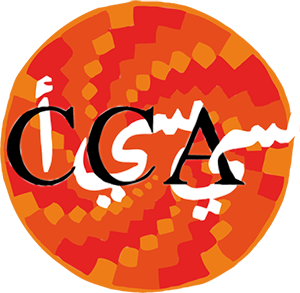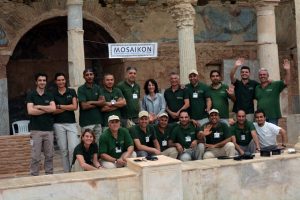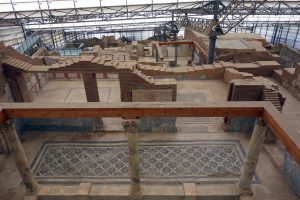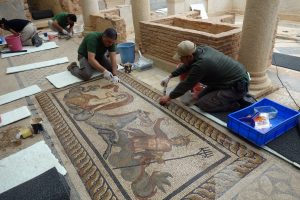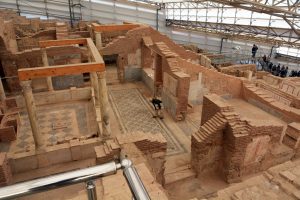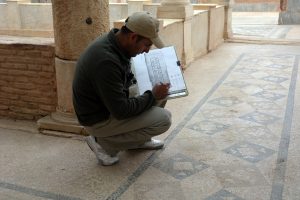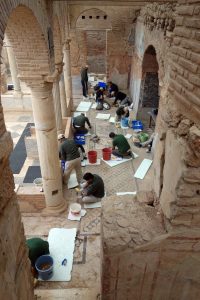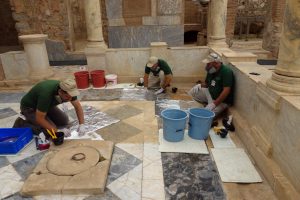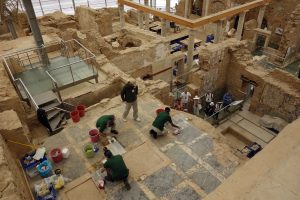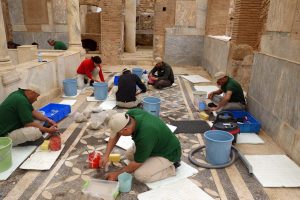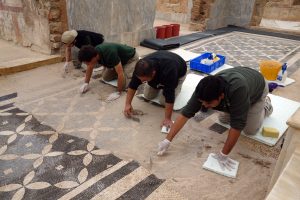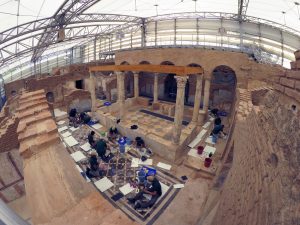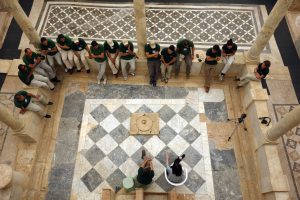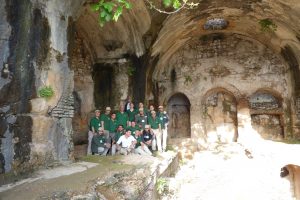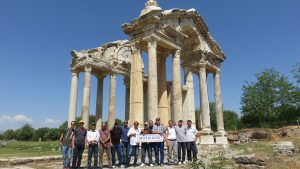Mosaic Conservation Course (MCC) 2016 On Site Project is a project born from a collaboration with the Jordan Department of Antiquities, the Libyan Department of Antiquities and the Tunisian Institute National du Patrimoine (INP). It is part of MOSAIKON, an international initiative aiming to strengthen local capacity for the conservation and management of mosaics in the Mediterranean region. The institutions that take part in the project are the Getty Conservation Institute (GCI), the Getty Foundation, the International Centre for the Study of the Preservation and Restoration of Cultural Property (ICCROM) and the International Committee for the Conservation of Mosaics (ICCM).
The whole program 2011-2016 was funded by a grant from the Getty Foundation. The module in Ephesus was hosted by the Austrian Archaeological Institute (ÖAI) with a contribution by the Ephesus Foundation.
The on site project was a four-week fieldwork experience on the mosaics of the archaeological site of Ephesus, Terrace House 2, dating to the 1st century BC – 1st century AD. It took place between the 18th of April and the 10th of May 2016 and was attended by participants of MCC 2016 from Jordan, Libya and Tunisia.
This on site project, aimed to put into practice some of the principles and techniques studied during the theoretical lessons of MCC courses. It was also an occasion for MCC participants from different countries to work together, exchanging ideas and experiences.
MCC 2016 On Site Project was attended by: Mashhour Altfiehat, Nemer Alzouby, Ziyad Othman, Mohammad Sh’Yyab and Firas Tbayshat from Jordan; Badr Albireeki, Ashraf Mohammed and Abdalsalam Sadoun from Libya; Taieb Belgacem, Ferhani Chihaoui and Hamadi Sillini from Tunisia.
Conservation activities took place on the mosaics of the Terrace House 2 in the archaeological site of Ephesus, under the supervision of Kristian Schneider, Chiara Zizola and CCA staff.
The mosaics presented a range of conservation issues typical of excavated archaeological mosaics, ranging to bulges and depressions, to detachment of tesserae and vegetation growth. Participants carried out all the main phases of a maintenance program for in situ mosaics: cleaning, consolidation, filling of lacunae, edging. Careful documentation of the work was also carried out during the intervention, using graphic, photographic and digital tools.
The whole intervention was performed in front of the public who could watch live operations.
 See more on MOSAIKON initiative:
See more on MOSAIKON initiative:
on the Getty Foundation website
on the GCI website
